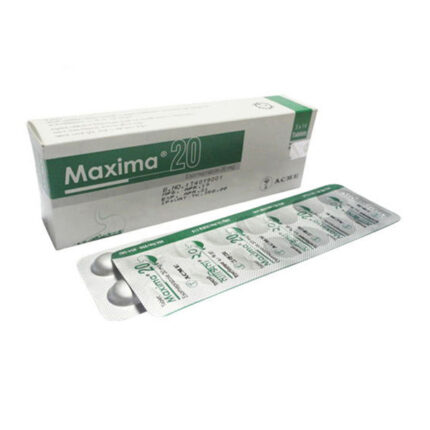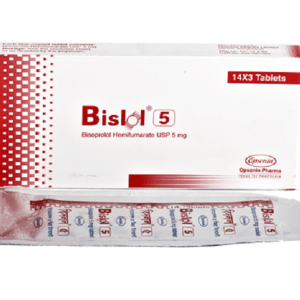Introduction
Ezetrol is a medicine used to treat high cholesterol. This medicine helps by lowering “bad” cholesterol (LDL) levels in blood. Cholesterol is a fatty substance that builds up in your blood vessels and causes narrowing, which may lead to a heart attack or stroke. Ezetrol should be taken in the dose and duration as advised by the doctor. You can take it at any time of day but try to take it at the same time each day. Most people with high cholesterol do not feel ill, but if you stop taking this medicine, your condition could get worse. This may lead to your cholesterol levels rising up again and increase your risk of heart disease and stroke. It is important to have your cholesterol levels checked regularly. This medicine is only one part of a treatment program which should also include a healthy diet, regular exercise, smoking cessation, moderation of alcohol intake and weight reduction. You can eat normally while taking this medicine, but try to avoid foods that are high in fat. Common side effects of this medicine include joint pain and diarrhea. Before taking this medicine its better to let your doctor know about all the other medicines that are prescribed to you. This medicine should be taken with caution if you are suffering from any kidney or liver disease. Also, pregnant women and breastfeeding mothers should not take this medicine without consulting the doctor.
Uses of Ezetrol
- High cholesterol
Side effects of Ezetrol
- Joint pain
- Sinus inflammation
- Diarrhea
- Respiratory tract infection
How to use Ezetrol
Take this medicine in the dose and duration as advised by your doctor. Swallow it as a whole. Do not chew, crush or break it. Ezetrol may be taken with or without food, but it is better to take it at a fixed time.
How Ezetrol works
Ezetrol is a cholesterol absorption inhibitors. It reduces the cholesterol absorption from the intestine and lowers the levels of total cholesterol and “bad” cholesterol (LDL) in the blood.
What if you forget to take Ezetrol?
If you miss a dose of Ezetrol, skip it and continue with your normal schedule. Do not double the dose.
 Quick Tips
Quick Tips- Ezetrol treats high cholesterol by lowering bad cholesterol (LDL) and raising good cholesterol (HDL). This helps prevent heart attack and stroke.
- Take it in addition to regular exercise and low-fat diet.
- Notify your doctor if you experience muscle symptoms (pain or weakness), particularly if accompanied with fever.
- Do not stop taking the medication suddenly without talking to your doctor.
 Brief Description
Brief DescriptionIndication
Hyperlipidaemias, Homozygous familial sitosterolaemia, Hypercholesterolaemia
Administration
May be taken with or without food.
Adult Dose
Oral Hyperlipidaemias; Homozygous familial sitosterolaemia Adult: 10 mg once daily. Hepatic impairment Mild (Child-Pugh class A): Dose adjustment not necessary Moderate to severe (Child-Pugh class B or C): Not recommended
Child Dose
Child: >10 yr: 10 mg once daily.
Renal Dose
Renal impairment Monotherapy: No dosage adjustment required Moderate to severe: Renal impairment is a risk factor for statin-associated myopathy; caution when coadministered with doses of simvastatin exceeding 20 mg
Contraindication
Hypersensitivity; moderate to severe liver disease or unexplained serum transaminase elevation. Children <10 yr, lactation.
Mode of Action
Ezetimibe localises at the brush border of the small intestine where it inhibits the absorption of cholesterol, thus decreasing its delivery to the liver. This results in decrease in cholesterol stores within the liver and an increase in cholesterol clearance from the blood.
Precaution
Renal or mild hepatic impairment. Monitor LFTs. Immediately discontinue ezetimibe and any HMG-CoA reductase inhibitor or fibrate if myopathy is diagnosed or suspected. Exclude or treat secondary causes of dyslipidaemia prior to initiating therapy. Lactation: Excretion in milk unknown; use with caution
Side Effect
1-10% Diarrhea (4%),Upper respiratory tract symptoms (2-4%),Cough (2-4%),Pain in extremity (3%),Sinusitis (3%),Arthralgia (2-3%),Fatigue (2%),Influenza (2%),Increased liver transaminases (with HMG-CoA reductase inhibitors; >3 x ULN; 1%)
Pregnancy Category Note
Pregnancy category: C Lactation: Excretion in milk unknown; use with caution
Interaction
Reduced absorption w/ colestyramine. Increased plasma concentrations w/ ciclosporin. Concomitant use w/ oral anticoagulants may result in increased INR.











Reviews
There are no reviews yet.